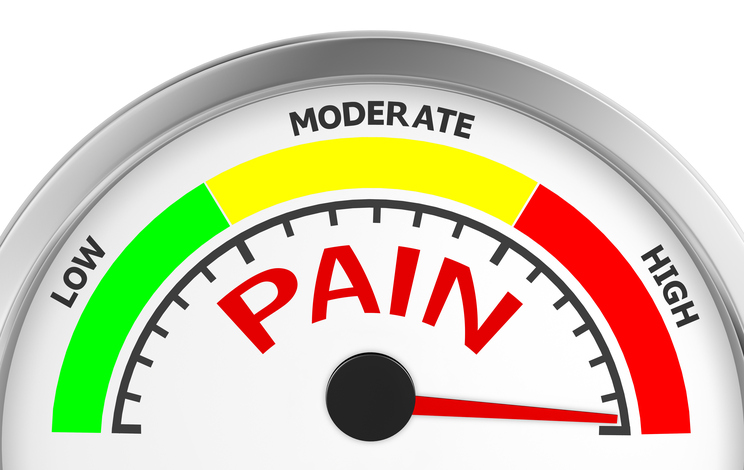
The mass shooting earlier this summer at a medical clinic in Tulsa is a wake-up call on pain. Tragically, a man who was suffering in so much pain, shot and killed his surgeon, Dr. Preston Phillips, and three others. Violence against healthcare providers is not okay. Gun violence of any kind is not okay.

Health Benefit Consultants, Share Your Expert Insights in Our Survey
Ivica Ducic Dr. Ivica Ducic is a clinical professor of surgery at George Washington University, the past president of the American Society of Peripheral Nerve, and Medical Director at Axogen Corporation.
We don’t want to take away from the crucial discussion about gun violence, but there’s another important lesson to be learned from this terrible tragedy: Pain is grossly misunderstood in our country.
It’s time we start paying serious attention.
Fifty million Americans live in chronic pain. It affects more Americans than diabetes, heart disease and cancer combined. Stated in a more powerful way: 50 million people live in relentless pain—a disability that controls nearly every element of their lives. Yet, it’s invisible.
In many cases, people are so desperate for relief, that suicide feels like their only option, with over 10 percent of suicides involving someone with chronic pain. We have to do better.

A Deep-dive Into Specialty Pharma
A specialty drug is a class of prescription medications used to treat complex, chronic or rare medical conditions. Although this classification was originally intended to define the treatment of rare, also termed “orphan” diseases, affecting fewer than 200,000 people in the US, more recently, specialty drugs have emerged as the cornerstone of treatment for chronic and complex diseases such as cancer, autoimmune conditions, diabetes, hepatitis C, and HIV/AIDS.
For many living with pain, searching for relief means an endless cycle of doctor appointments and trial and error of pain medications, narcotics and other pain management techniques. While these treatments may help temporarily mask the pain, they often fail to address what is causing it in the first place—and the pain always returns.
People lose hope that they’ll ever find a good solution. Some reach a dead end and are forced to live with their pain and significantly reduced quality of life for them and their loved ones. We can’t live in a world where there are seemingly only two choices for chronic pain sufferers—being dependent on pain medication or living a life ruled by pain. There must be more we can do. And, in fact, there is.
It starts with better understanding of the root cause.
- Realizing the source of pain can prevent despair. Most people aren’t aware that the root cause of pain can be an injured nerve or, more importantly, that the issue can be resolved.
- Nerve damage is common, but often goes undiagnosed. Nerves can be unknowingly damaged during a traumatic injury or previous surgery; nerve damage is also common after amputation. Pain persisting for more than three months indicates that a nerve may be to blame.
- Nerve pain is different for everyone. For some it feels like electrical shocks, others describe it as “pins and needles,” sharp spasms, a burning sensation, or extreme sensitivity to touch or heat and cold. It can be unrelenting and incredibly debilitating.
- With advances in surgical nerve repair and the field of microsurgery, an injured nerve can be surgically repaired to resolve the cause of the pain and potentially even restore and regenerate nerve function, providing the chance to live pain free again.
- Many types of peripheral nerve damage can be addressed by surgical nerve repair, but the sooner the better. There are some types of nerve damage that are more generalized, like fibromyalgia or general neuropathy (meaning one specific location of damage cannot be isolated or identified). In cases like these, surgical nerve repair may not be a good option.
- You will need to consult with a physician who specializes in microsurgical nerve repair, such as a plastic reconstructive surgeon or orthopedic hand surgeon, for options related to your specific type of injury or nerve damage.
What else can be done to help those suffering?
- We need to raise awareness and drive education of what leads to chronic pain, as well as the potentially permanent solutions for some types of nerve pain.
- We need to make it easier for people to access alternative treatments. Access and affordability are critical issues. The NOPAIN Act is an important step in this direction.
Dialogue can strengthen hope.
For everyone suffering from chronic pain, we see you. We want you to know you don’t have to suffer alone. Pain does not have to define your life. There are support groups and nerve surgeons who specialize in helping patients with pain due to nerve damage whose goal is to help you find a more permanent solution:
- To see if you’re a candidate for surgical nerve repair, take an online nerve pain assessment, such as the survey at rethink-pain.com.
- It’s important to realize you are not alone. Find a support group at painconnection.org.
- If you have suicidal thoughts or feelings, call the National Suicide Prevention Lifeline at 800-273-8255.
Our nation is severely lacking in its approach to chronic pain. Nobody should ever resign themselves to forever experiencing pain and end their life or the lives of others. And medical professionals should not have to live in fear. Please let this be a watershed moment on both pain and gun violence.
Photo – boygovideo, Getty Images
Dr. Ivica Ducic is a clinical professor of surgery at George Washington University, the past president of the American Society of Peripheral Nerve, and Medical Director at Axogen Corporation.












